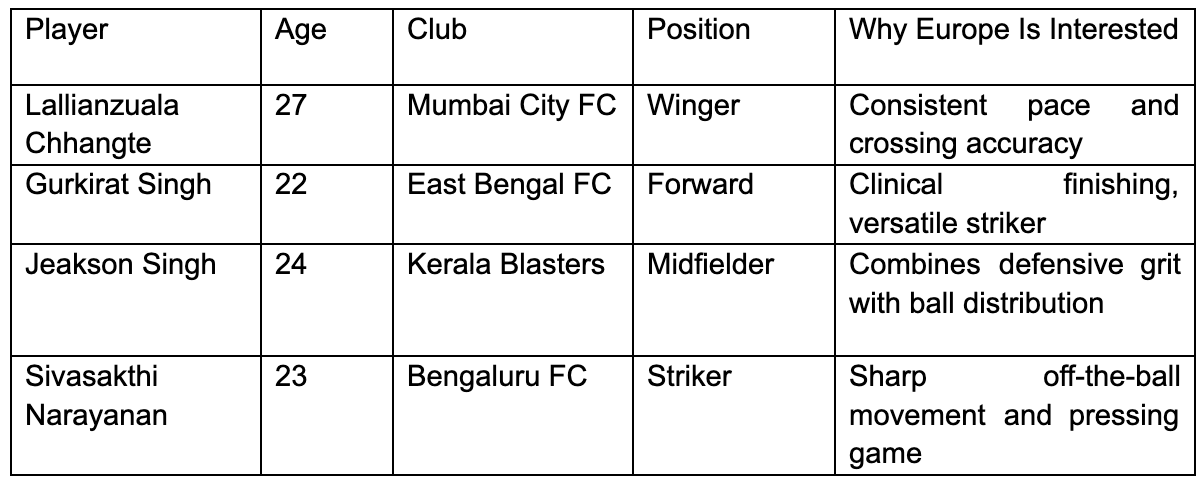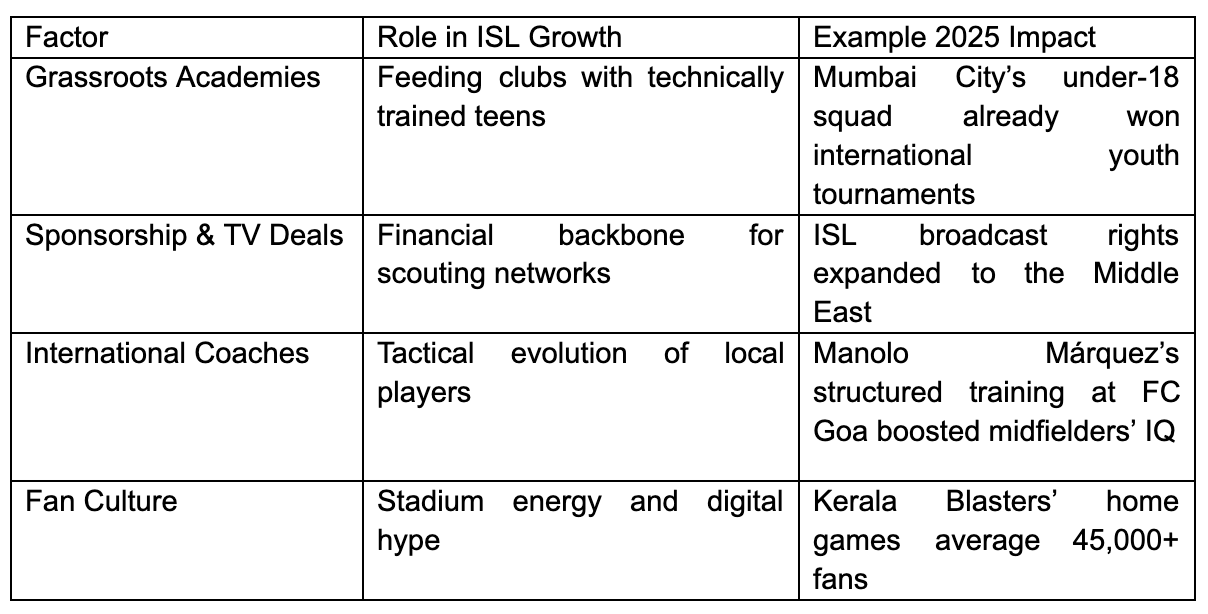The Indian Super League (ISL) has always been ambitious, but 2025 feels different. Stadiums are fuller, television ratings have spiked, odds at online casino India are ready and scouts from Europe are arriving in larger numbers than ever before.
What was once a “developmental league” is now a fertile ground for talent, and the conversation has shifted from “Can India play?” to “Which Indian star is leaving for Europe next?” The ISL’s evolution reflects not just local growth, but a global curiosity that’s finally impossible to ignore.
The Youth Wave That Refuses to Be Overlooked
Indian clubs have invested heavily in academies, and their gamble is paying off. Players in their early twenties are not just filling benches, they’re dictating matches. The technique, stamina, and tactical maturity on display have created a new sense of urgency among European clubs who want the first pick before prices skyrocket.
Some of the standout youth prospects shaping 2025 include:

These names are are stars whose games are broadcast live and dissected by analysts across continents and not hidden gems anymore. For advanced bettors from online casino India, it feels like a collective victory: the league they support now produces exports good enough for Europe. For global viewers, it’s an exciting chance to scout tomorrow’s stars before they become household names.
Why Scouts in Europe Are Suddenly Obsessed
The shift didn’t happen overnight. It came from three converging forces: better training facilities, international coaches raising tactical IQ, and consistent exposure to high-intensity football.
European clubs, always hunting for undervalued markets, now see India as the next frontier-similar to how Japan and South Korea were once considered unproven before producing global icons.
Key reasons Europe is watching India so closely:
Affordability factor – Transfers are cheaper compared to South America or Africa.
Cultural adaptability – Indian players show strong discipline in training environments.
Fan engagement – Signing an ISL star can open marketing doors in Asia.
Technical growth – Midfielders and attackers now demonstrate composure under pressure.
This combination is irresistible. In fact, some agents are already branding ISL as “Asia’s Brazil”-a market overflowing with untapped flair. And while not every player will make it to La Liga or the Premier League, the sheer volume of emerging professionals ensures Europe won’t stop watching.
Even off the pitch, the ecosystem of online casino India has paralleled this scouting surge, drawing investors and brands eager to align with India’s booming sports culture.
The Local Ecosystem Powering Global Dreams
Behind the talent is a machine of clubs, academies, and fanbases that finally understand football as both art and business. Unlike ten years ago, Indian clubs now actively sell their best players abroad instead of holding them back.
Sponsorships, television money, and growing attendance figures have created financial breathing space, letting clubs focus on producing rather than just surviving.

All these factors together explain why Europe isn’t just looking at players-it’s looking at the league. And in the middle of this energy surge, parallel industries like online casino India are hitching onto the ride, betting (literally and figuratively) that football is India’s next cultural export.
Conclusion
The ISL’s story in 2025 isn’t just about goals or trophies, it’s about credibility. Indian footballers are no longer distant dreamers; they are viable assets for Europe’s top leagues. Fans sense it, scouts know it, and players are embracing it.
The next five years may not give us a Messi or Ronaldo from India, but it will almost certainly give us pioneers who prove that the subcontinent belongs on football’s global map. And that’s a future Europe is already preparing to welcome.
Informazioni fornite in modo indipendente da un nostro partner nell’ambito di un accordo commerciale tra le parti. Contenuti riservati a un pubblico maggiorenne.




